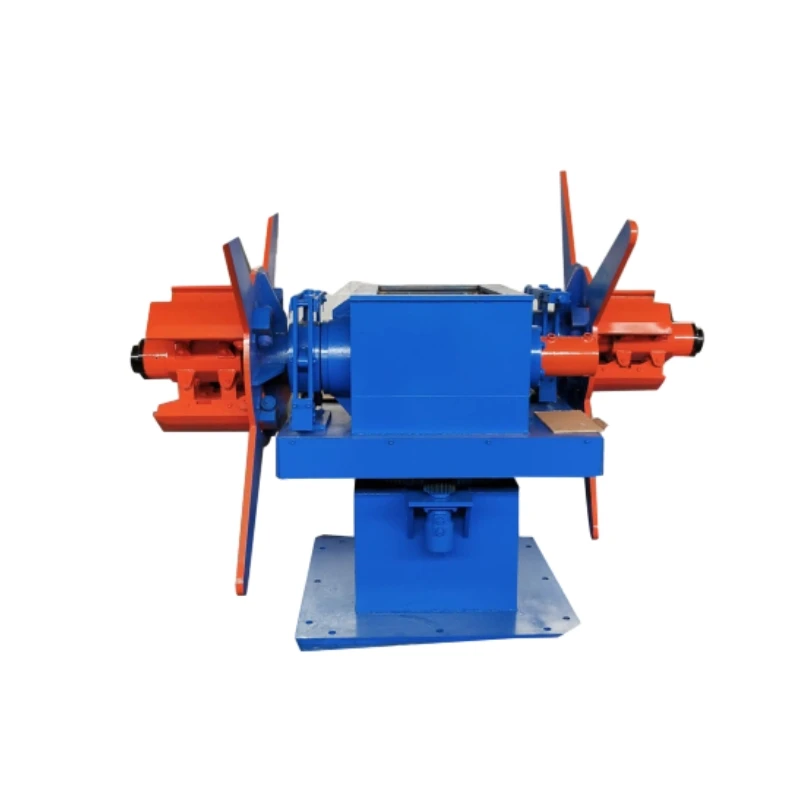Exploring the Mechanics and Applications of Roll Forming Technologies in Manufacturing Processes
Understanding Roll Forming Systems A Comprehensive Overview
Roll forming is a manufacturing process that involves the continuous bending of metal sheets into desired shapes. It utilizes a series of roller dies, which gradually shape the material as it passes through. This technique is particularly effective for producing long lengths of components, making it a popular choice in various industries, including automotive, construction, and appliances.
The Process of Roll Forming
The roll forming process begins with a flat strip or coil of metal that is unwound and fed through a series of rollers. Each roller station progressively shapes the metal, bending it to the desired profile. The process can vary in complexity, with some designs requiring multiple passes through the rollers to achieve the final shape. Typically, the rollers are arranged in such a way that they perform a series of small, controlled deformations, which helps to maintain the integrity of the material and minimize the risk of defects.
Advantages of Roll Forming Systems
1. High Efficiency Roll forming systems are highly efficient, allowing for the production of large quantities of parts with a consistent profile. Once the tooling is set up, the machinery can operate at high speeds, reducing production time significantly.
2. Material Versatility This process can be used with a variety of materials, including steel, aluminum, and even certain plastics. The ability to work with various metals makes roll forming suitable for a wide range of applications.
3. Cost-Effective Roll forming systems can be cost-effective, especially for large production runs. The initial setup costs for tooling can be high, but once established, the cost per unit drops significantly, making it ideal for high-volume manufacturing.
4. Tight Tolerances Roll forming can achieve tight tolerances and precise dimensions. This level of accuracy is important in industries where component fit and function are critical.
roll forming systems

Applications of Roll Forming
Roll forming is used in a multitude of applications across various industries. In the automotive sector, it is commonly used to create components such as bumper beams, roof rails, and chassis parts, where strength and weight are crucial. In construction, roll-formed products like metal roofing, siding, and structural components are prevalent due to their durability and longevity. Additionally, roll forming is employed in the manufacturing of appliances, furniture, and HVAC systems, showcasing its versatility.
Roll Forming Equipment
The key components of a roll forming system include the uncoiler, feed mechanism, roll stands, and cutting station. The uncoiler feeds the metal into the system, while the feed mechanism ensures that it is delivered consistently to the roll stands. The roll stands house the rollers that shape the material and are often adjustable to accommodate different profiles. Lastly, the cutting station can either cut the formed shapes to length or shear the metal as it exits the roll forming line.
Challenges and Considerations
While roll forming offers numerous advantages, there are challenges to consider. The initial setup for tooling can be expensive and time-consuming. Additionally, the technology may require skilled operators to ensure consistent quality. Material properties, such as thickness and malleability, also play a significant role in the suitability of roll forming for a particular project.
Conclusion
Roll forming systems are an essential technique in modern manufacturing, offering efficiency, versatility, and cost-effectiveness. As industries continue to evolve, the demand for tailored solutions and high-quality components will likely drive further advancements in roll forming technology. Understanding the principles and applications of roll forming can help businesses optimize their manufacturing processes and meet the growing expectations of their customers. As technology progresses, we can expect to see even more innovative applications and improvements in roll forming systems, solidifying their place in the manufacturing landscape.
-
High Frequency Straight Seam Welded Pipe Production Line-BzZhou Xinghua Machinery Equipment Manufacturing Co., LTD.|line pipe steel&welded gas pipeNewsJul.30,2025
-
High Frequency Straight Seam Welded Pipe Production Line-BzZhou Xinghua Machinery Equipment Manufacturing Co., LTD.|High Precision&Automated SolutionsNewsJul.30,2025
-
High Frequency Straight Seam Welded Pipe Production Line - BzZhou Xinghua Machinery Equipment Manufacturing Co., Ltd.NewsJul.30,2025
-
High Frequency Straight Seam Welded Pipe Production Line-BzZhou Xinghua Machinery Equipment Manufacturing Co., LTD.|Precision Welding, High EfficiencyNewsJul.30,2025
-
High Frequency Straight Seam Welded Pipe Production Line|BzZhou Xinghua|Precision Welding&EfficiencyNewsJul.30,2025
-
High Frequency Straight Seam Welded Pipe Production Line - BzZhou Xinghua|Precision Engineering&EfficiencyNewsJul.30,2025


